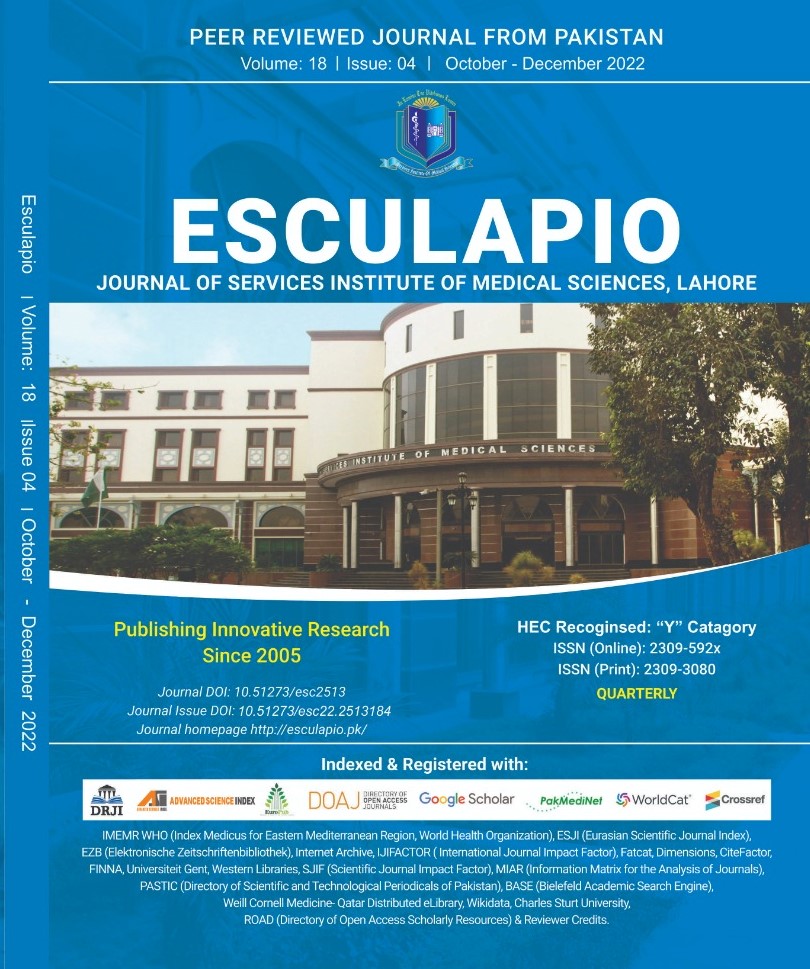Determination of Clinical Patterns of Onychomycosis in Patients presenting with Nail disorders to a Tertiary Care Hospital
DOI:
https://doi.org/10.51273/esc22.2518412Keywords:
Pattern, Onychomycosis, Nail disorders, Tertiary care hospitalAbstract
Objective: To determine the clinical pattern of onychomycosis among patients of nail diseases at Faisalabad
Method: This cross-sectional survey was done over a period of six months, at Outpatient Department of Dermatology, Allied/ D.H.Q Hospitals, Faisalabad Medical University. 210 cases with clinical diagnosis of onychomycosis were included. Patients taking treatment for fungal infection were excluded. Detailed history and examination was done. Type of onychomycosis was noted. Co morbidities like diabetes, hypertension and immunosuppression (determined on history and medical record) were noted.
Results: Atotal of 210 patients were included with mean age 47.14 ± 13.71 years. Males were 113 (53.81%) and females were 97 (46.19%). Distal lateral subungual onychomycosis (DLSO) was seen in 112 (53.33%), Total dystrophic onychomycosis (TDO) in 56 (26.67%), proximal subungual onychomycosis (PSO) in 27 (12.86%) and white superficial onychomycosis (WSO) in 15 (7.14%) patients.
Conclusion: It is seen that onychomycosis is a frequently seen nail disorder at a tertiary care setting. Distal lateral subungual onychomycosis was the most frequently encountered clinical pattern.
How to cite: Sarwar A, Kanwal A, Tariq H, Shahid M, Asad F, Haseeb S. Determination of Clinical Patterns of
Onychomycosis in Patients presenting with Nail disorders to a Tertiary Care Hospital. Esculapio - JSIMS
2022;18(04):248-252.










